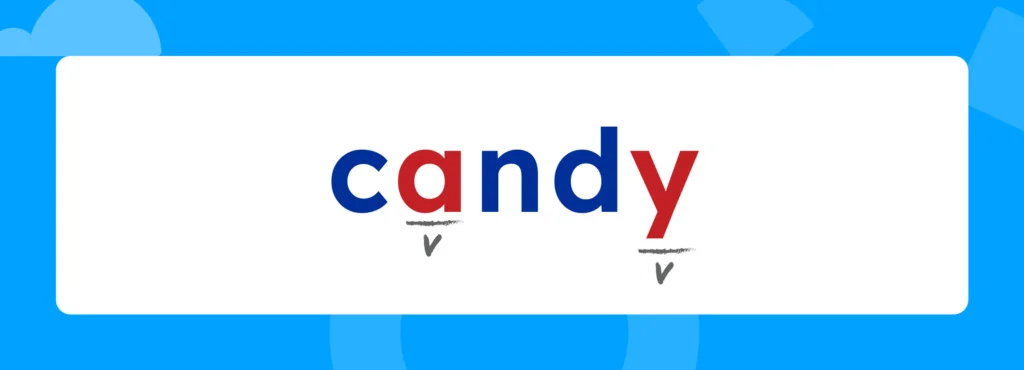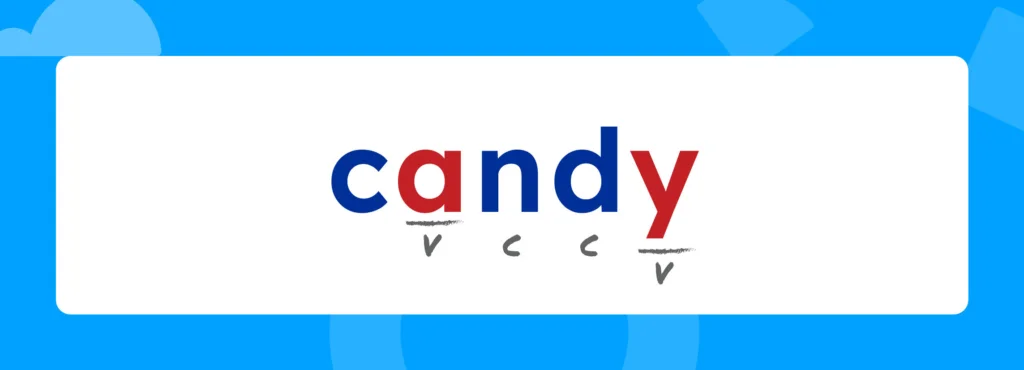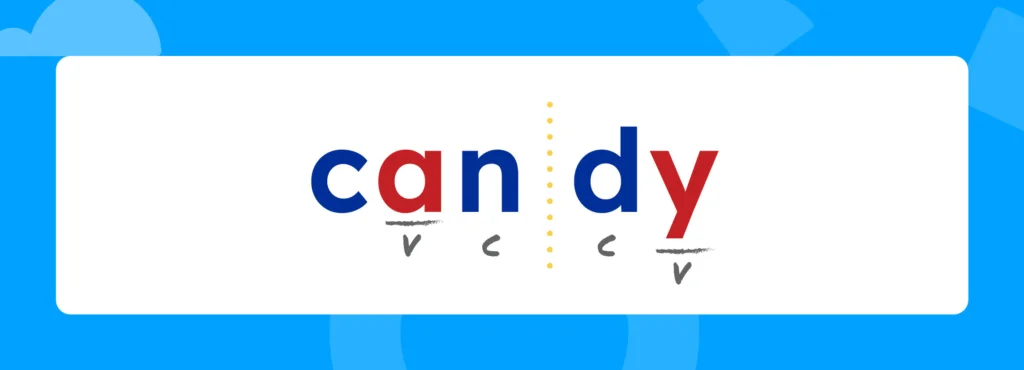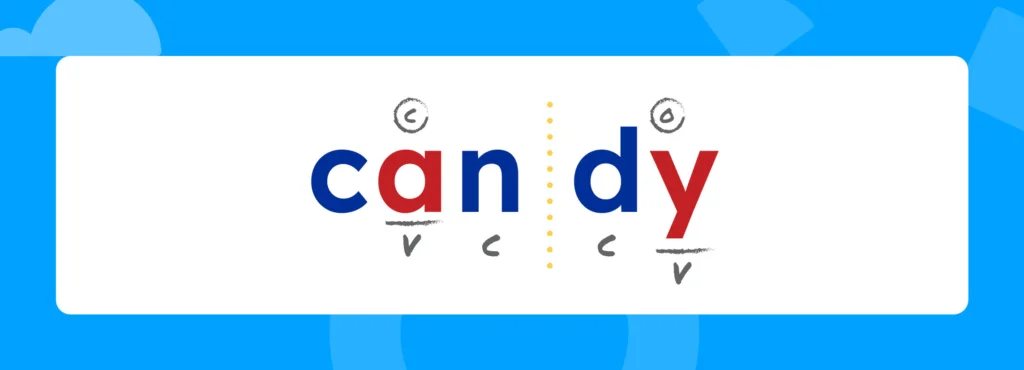3.2 Explicitly Teach 'y' as a Vowel
‘y’ as a Vowel Skill Explainer
Now it's time to teach!

Teacher Tip
Telling the Alphabet Queen story (based on The Alphabet King (opens in new window), an original story by dyslexia therapist Jennings Miller) is a great way to kick off this new material. The story often quickly becomes a favorite with young students! You'll tell new versions of the story as you teach other syllable types and phonics skills. In this version of the story, 'y' is the "Sneaky Thief" who slips into the vowels' pen and steals the sounds of long /ī/ and long /ē/.
Telling the Alphabet Queen story (based on The Alphabet King (opens in new window), an original story by dyslexia therapist Jennings Miller) is a great way to kick off this new material. The story often quickly becomes a favorite with young students! You'll tell new versions of the story as you teach other syllable types and phonics skills. In this version of the story, 'y' is the "Sneaky Thief" who slips into the vowels' pen and steals the sounds of long /ī/ and long /ē/.
1. Teach 'y' as a Vowel at the End of One-Syllable Words (Long 'i')
Today we are going to learn about another job that the letter 'y' has. We know that 'y' is a consonant and spells /y/ when it is at the beginning of a word.
'y', yoyo, /y/.
'Y' can also act as a vowel! When 'y' is at the end of a one-syllable word, the 'y' says the long 'i' sound /ī/!
This is a picture of a baby crying. Listen to what we will say when I show you this card. 'y', cry, /ī/.
'y', cry, /ī/.
Where is the 'y' in this word? [at the end]
Yes! The 'y' is at the end of the word. When 'y' is at the end of the word, it acts like a vowel and spells the /ī/ sound.
How many syllables are in the word cry? [one]
Yes! There is one syllable in the word cry. So when we have a one-syllable word with a 'y' at the end, the /ī/ sound is spelled with a 'y'.
To help us remember we are going to say: "The 'y' at the end of a one-syllable word says /ī/ like in cry."
The 'y' at the end of a one-syllable word says /ī/ like in cry.
The letter 'y' is at the end of the word, and is not closed in by a consonant, so this syllable is an open syllable. That means the vowel sound will be long.
This word has one syllable, so how do we spell the /ī/ sound at the end of a one-syllable word? ['y'] Yes!
The 'y' at the end of a one-syllable word says /ī/ like in try.
Let's tap the sounds in this word together /t/, /r/, /ī/. What is the word? [try]
Now let's talk about spelling. To help us remember when 'y' is a vowel we say, 'y' at the end of a one-syllable word spells /ī/.
That means if I am spelling a word and I hear a long i, /ī/, at the end of a one-syllable word, I know I spell it with a 'y'.
Let's look at this word again. What is the word? [try]
Let's talk about why the /ī/ sound is spelled with 'y'.
Is it a one-syllable word? [yes]
What sound do we hear at the end? [/ī/]
So, how do we spell that sound? [with a 'y']
Now let's spell a word together! The word is shy. Let's tap the sounds in shy, /sh/, /ī/. The first sound we hear is /sh/, how do we spell /sh/? [sh]
sh _
The last sound here is /ī/. Is shy a one-syllable word? [yes]
The /ī/ sound is at the end of the word and it's a one-syllable word. So, we spell it with a 'y'.
2. Teach 'y' as a Vowel at the End of Multisyllabic Words (Long 'e')
We have already learned that 'y' is a consonant and can also be a vowel. What sound does 'y' spell as a consonant at the beginning of a word? [/y/]
And what sound does 'y' spell as a vowel at the end of a one-syllable word? [/ī/]
Today, we're going to learn another vowel sound that 'y' can spell. The long 'e' sound at the end of a multisyllabic word is spelled with a 'y' like baby.
This is a picture of a baby crying. Listen to what we will say when I show you this card. "'y', baby, /ē/".
'y', baby, /ē/.
Where is the 'y' in this word? [at the end] Yes! The 'y' is at the end of the word.
When 'y' is at the end of the word, it acts like a vowel.
How many syllables are in the word baby? [two]
Yes! There are two syllables in the word baby. So when we have a multisyllabic word with a 'y' at the end, the 'y' says /ē/.
To help us remember we are going to say: "The 'y' at the end of a multisyllabic word says /ē/."
'y' at the end of a multisyllabic word says /ē/.
We learned to say "'y', cry, /ī/" for this card. It is a picture of a baby crying. We are now going to also say "y, baby, /ē/" to help us remember that 'y' at the end of a multisyllabic word says /ē/.
Listen to what we will now say when we see this card.
'y', cry, /ī/
'y', baby, /ē/
'y', cry, /ī/
'y', baby, /ē/
Let's practice dividing the syllables and reading this word. First, we're going to underline the vowels in our word:
I'm going to start at the beginning of the word and underline the vowels and mark them with a 'v'.

- I'm going to look between those two vowels and mark the consonants with a 'c'.

Next, we're going to divide our word into syllables:
When we have two consonants between the vowels, we draw a line and divide between the consonants.

Now we're going to label each syllable type:
Look at the first vowel. Is it closed in by a consonant? [yes]
What does that tell you about the vowel? [The vowel will make its short sound.]
Look at the next vowel. Is it closed in by a consonant? [no]
What syllable type is this? [open]
What sound does the 'y' make? [/ē/, the 'y' says /ē/ at the end of a multisyllabic word]

Now that I have divided it into syllables, the word will be much easier to read.
Look at the first syllable. Since we know that the first syllable is closed, we know how to read it! Let's read it together [can-].
Now look at the next syllable. This is an open syllable because 'y' is a vowel and there are no consonants after it. We just learned that when the /ē/ sound is at the end of a multisyllabic word it is spelled with a 'y'. Let's read that syllable. [-dy]
